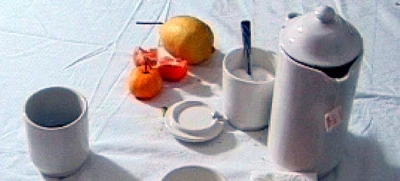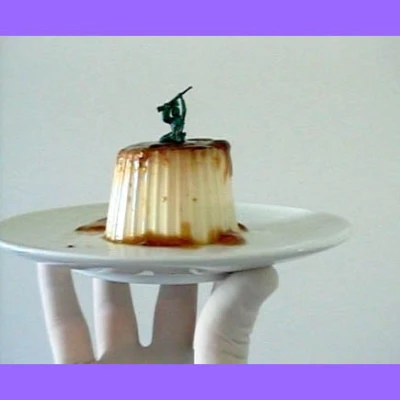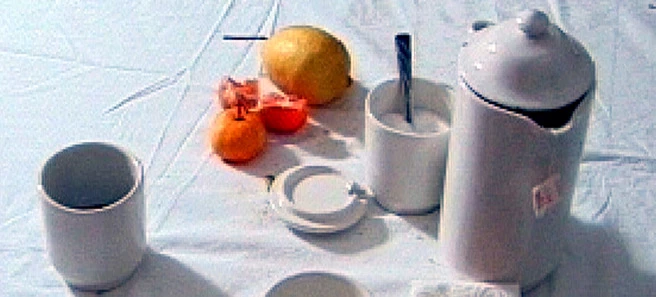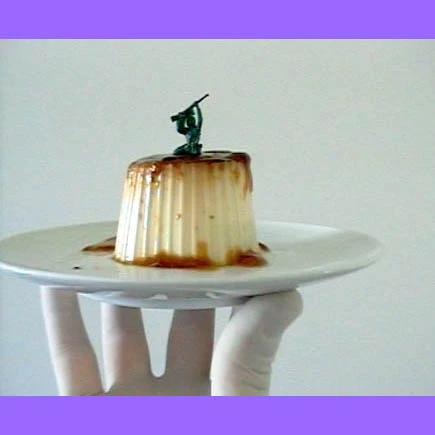Play
CURATED BY
Giovanni Surace, Guido Curto, Laura Cherubini, Cecilia Castrati, Matteo Chini, Lorenzo Taiuti and Roberto Daolio
From 08.05.2003 to 29.05.2003
Careof will host the exhibition Start and the video review Play from May 9 to 29. This is the first stage of a project that aims to monitor over time the changes, directions, and intentions that drive the artistic research of the younger generations.
Start presents the works of five young artists. The black and white video by Alexandros Kyriakides (Athens, 1979) recalls early silent films or old scientific and educational footage from the 1960s. With marked irony, the Greek artist revisits, forty years later, scenes evoking the first attempts at space exploration, but reinterpreted with a new playful spirit and translated into surreal slices of reality. The video installation by Rossella Biscotti (Bari, 1978) also offers fragments of reality, but this time it is a personal and intimate presentation of the everyday, based on fixed shots that create disorienting situations, destabilizing the usual perception of moving images and approaching an almost photographic stillness. Croatian artist Dragana Sapanajos (Koper, 1979) presents a project realized through meticulously crafted models—miniature rooms with glass walls that allow the viewer to peer inside. A small figure, a stand-in for the public/viewer, loses control of its body and begins to twirl through the ventilated space. Luca Bertini’s (Lugano, 1979) work also aims to involve the viewer, but in a more ethereal and virtual way, through the “web.” The artist stages a telematic performance that escapes the closed space of the gallery and enters people’s lives by violating their privacy. His provocative phone messages, sent months before the exhibition, camouflage themselves and reach an unsuspecting and therefore more vulnerable audience. Of an entirely different nature is the work of Barbara Aloisio (Sondrio, 1980), who, with obsessive precision, creates delightful little garments to “warm” the internal organs of the proteic body of the third millennium.
An integral part of the event, as already mentioned, is the video review Play, supported by a critical text by Matteo Chini. Carefully selected by professionals in the field from major Italian cities—Giovanni Surace, Guido Curto, Laura Cherubini, Cecilia Casorati, Matteo Chini, Lorenzo Taiuti, and Roberto Daolio—Play focuses on the specific language of video, which increasingly fascinates and interests artists for its visual impact and mobility. The review is intended as a traveling event and, after its initial presentation at the Careof space, will be showcased at other venues.
Review featuring videos by Laura Baldini; Lionice Cola; Emre Huner; Giorgio Cugno; Barbara Cucchiarati; Veronica Della Scala; Giuseppe Moscatelli; Andrea Paleri; Nicola Sbrozzi; Marinella Senatore; Angelo Sarleti; Diego Zuelli.
critical essay
Dalla matita alla telecamera
by Matteo Chini
The educational curriculum of creative professions and artistic teaching in general—from which all the artists featured in this review come—still preserves the memory of an ancient priority: drawing as a tool for analyzing reality and as a privileged means for constructing images. From anatomy classes to life drawing, from the habit of copying live models to the traditional instruction in many painting, sculpture, set design, and decoration courses, the practice of drawing as the foundation of artistic activity persists today as a basic component of art-making. A bit like mathematics for the sciences.
However, the landscape of tools used to produce and circulate images has changed profoundly. Television, computers, cinema, and photography now dominate our media environment and constitute almost entirely the visual heritage of contemporary life.
A common characteristic of these technologies is the use of mechanical devices that completely replace the artist’s manual skill. Mediated creation thus supplants traditional techniques based on virtuosity, touch, shading, sketching—in other words, drawing.
The new ways of capturing and appropriating the “real” now follow other paths: the photographic shot, video recording, data downloading, and so on. The information obtained through these means is easily stored in computer memory and immediately available for virtually infinite edits and recombinations.
The video format in particular allows for the rapid import of sounds and moving images, which can then become videos, video installations, photographic prints, short films, and recordings of the most varied kinds. But it increasingly also serves as a notebook for capturing episodes, actions, landscapes, memories, and reflections to be edited later. The same is happening in the field of music. Young musicians increasingly prefer the quick shorthand of recording (digital, multitrack, or analog and direct) over complex musical notation to save their ideas and produce demo tapes.
Art, having entered the phase of post-production, now requires new tools that are more flexible and faster. Thus, low quality and the use of a “dirty” image no longer result from technological imprecision but from the intentional practice of artists who prioritize ideas over polished execution and are not distracted by sophisticated editing.
Hence the deliberately “Lo-Fi” rendering of some of the works on display. And hence the persistent return to themes connected to the vast potential for appropriation that such devices allow: memory, behavior, biography, identity and difference, narrative, and “anthropological” research. A relational realism that forms the core of the work of most of these young emerging artists.
In the animated works, on the other hand, the sense of reality is conveyed precisely through a strong injection of low quality that forcefully opposes the sensory numbness usually induced by the audiovisual flow of television.
Thus, alongside less disruptive works, some more original ones are hidden. All of them, however, speak the language of the present moment outside any formalism, giving shape to our hopes and fears without dwelling on issues that have long since disappeared from the contemporary horizon.
Another demonstration—if one were needed—of the great vitality of the video medium, a true contemporary “pencil” for recording and reworking reality.



